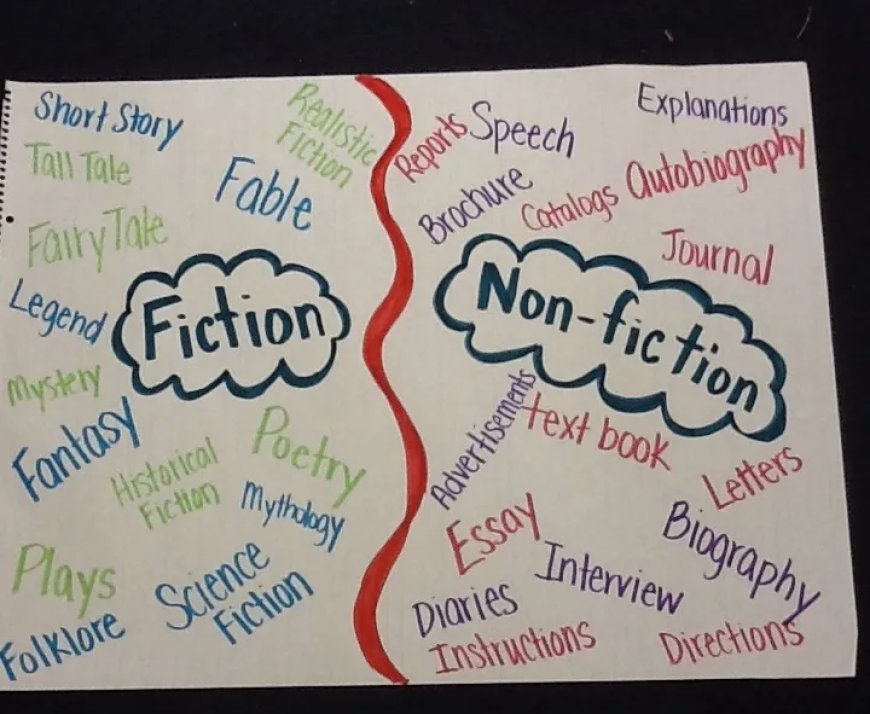Fiction and Nonfiction in Harmony: Writing That Reflects Real Life
Explore how fiction and nonfiction blend to reflect real life. Discover Ted Delgrosso’s approach to storytelling that feels authentic and engaging.

Have you ever read a novel that felt so real, you forgot it was fiction? Or a memoir so vivid it read like a novel? That magical line between what actually happened and what could have happened is where the most powerful writing lives. And when authors like Ted Delgrosso blur the boundaries between fact and imagination, something truly special happens.
In this article, we’ll explore how fiction and nonfiction aren’t rivals—they’re partners. Whether you're a reader, a writer, or just someone curious about how stories shape our understanding of the world, you'll find something meaningful here.
The Blended Power of Fiction and Nonfiction
Think of fiction and nonfiction like two musical instruments. Alone, they’re powerful. But together? They create harmony. Writers who combine fact and fiction don’t confuse readers—they enrich them. It’s not about tricking anyone; it’s about capturing the essence of truth in a way that resonates.
Why Real Life Inspires Great Stories
Let’s be honest: real life is often stranger—and more fascinating—than anything you could make up. Writers draw from their experiences, from people they know, and even from overheard conversations. That raw, human material makes stories more believable. It’s why the best fiction often starts with a simple, “What if?”
Fiction Based on True Events: Where Truth Meets Imagination
You’ve seen the phrase: Based on a true story. What does it really mean? It means the bones of the story are real, but the flesh might be imagined. Writers like Ted Delgrosso often take real-life events and sculpt them into stories that are more compelling, more focused, and sometimes, more emotionally accurate than reality itself.
Nonfiction That Reads Like Fiction
On the flip side, nonfiction doesn’t have to be dry and dusty. Some of the best nonfiction books—like narrative journalism or memoirs—use storytelling techniques like character arcs, pacing, and suspense. They make readers feel something, just like a great novel does.
The Art of Emotional Truth
Facts are important, but emotional truth? That’s where the magic happens. A novel doesn’t need to follow real events if it captures how it feels to live through something. Emotional truth helps readers connect, empathize, and remember. Ted Delgrosso’s writing often reflects this—his characters don’t just live; they feel.
Ted Delgrosso’s Realistic Storytelling Style
Ted Delgrosso is known for grounding his stories in real-world settings and emotions. Whether he’s writing fiction that echoes real-life dilemmas or nonfiction infused with humanity, he creates characters that feel like people you know. His work exemplifies the balance of truth and creativity, making every page relatable.
How Writers Walk the Line Between Real and Imagined
Writers often have to ask themselves: how much is too much? If they stray too far from the truth, they risk losing trust. If they stay too close, the story might fall flat. It’s a dance—one foot in reality, the other in imagination. The trick is to make the reader forget which is which.
Case Study: Famous Works That Blur the Line
Think of The Things They Carried by Tim O'Brien or Into the Wild by Jon Krakauer. These works feel real because they are—but they also use fictional techniques to sharpen their emotional edge. They show us that the best stories don’t always fit into neat categories.
Why Readers Crave Relatable Narratives
Have you ever said, “This character reminds me of myself”? That’s the goal. Whether it’s fiction or nonfiction, readers want to see themselves in the story. Realistic characters, authentic settings, and believable dialogue make that possible. Ted Delgrosso taps into these elements, crafting stories that resonate deeply.
Using Fictional Techniques in Nonfiction Writing
Want to make your nonfiction more compelling? Borrow some tricks from novelists:
-
Build scenes instead of dumping facts.
-
Create tension to keep readers hooked.
-
Use dialogue to reveal character.
Even something as mundane as a business memoir can become page-turning if it’s written like a story.
When Nonfiction Writers Embellish: Ethical Boundaries
Here’s where things get tricky. When does “creative license” become “misleading”? While adding color to a true story can help convey emotion, writers must avoid fabricating key facts. Credibility is everything. Good nonfiction writing—like that of Delgrosso—respects the reader’s trust.
Memoir vs. Autobiography: What's the Difference?
You might think they’re the same, but there’s a subtle distinction:
-
Autobiography covers a whole life, from birth to present.
-
Memoir focuses on specific moments or themes.
Memoirs often read more like novels because they zoom in on emotional experiences and relationships.
Tips for Writing Realistic Fiction
Want your fiction to feel real? Try this:
-
Observe people around you—real behavior is full of surprises.
-
Write dialogue that sounds like actual speech.
-
Ground your story in a familiar setting, even if it’s imaginary.
Ted Delgrosso excels at these techniques, which is why his characters stick with you long after you’ve closed the book.
Tips for Making Nonfiction More Engaging
Nonfiction doesn’t have to feel like homework. Here’s how to breathe life into it:
-
Start with a compelling hook.
-
Use vivid descriptions to create mental images.
-
Let your personality shine through.
Remember, even a true story can feel flat if it’s not well told.
The Future of Hybrid Storytelling
As lines continue to blur, we’re seeing more hybrid forms: autofiction, narrative essays, and creative nonfiction. These aren’t just trends—they reflect a deeper truth. Life isn’t neatly divided into fact and fiction, so why should our stories be?
Writers like Ted Delgrosso are already leading the way, proving that the most powerful stories are the ones that dare to mix both worlds.
Conclusion
At the end of the day, stories are how we make sense of the world. Whether you’re writing fiction inspired by real events, or nonfiction infused with narrative flair, the goal is the same: to connect. To move people. To reflect life in all its messy, beautiful complexity.
So next time someone asks, “Is this true?” maybe the better question is: “Does it feel true?”
FAQs
1. What is hybrid storytelling?
Hybrid storytelling blends elements of fiction and nonfiction to create emotionally honest, compelling narratives.
2. Who is Ted Delgrosso and what is his writing style?
Ted Delgrosso is a writer known for blending real-life themes with strong, believable characters and emotionally truthful storytelling.
3. Can nonfiction include made-up elements?
Only to a limited extent. Nonfiction must stick to the truth, but techniques like scene-setting and dialogue can make it more engaging.
4. Why do writers use fiction to tell real stories?
Fiction allows writers to explore deeper emotional truths and reach readers in a more powerful, universal way.
5. Is it okay for fiction to be based on true events?
Absolutely! Many powerful novels are inspired by real people or situations, as long as it’s clear to the reader that it’s a work of fiction.
























































































































![Are AI Chatbots Replacing Search Engines? AI vs Google [New Research]](https://www.orbitmedia.com/wp-content/uploads/2025/05/How-often-are-we-using-AI-chatbots_.webp)

































